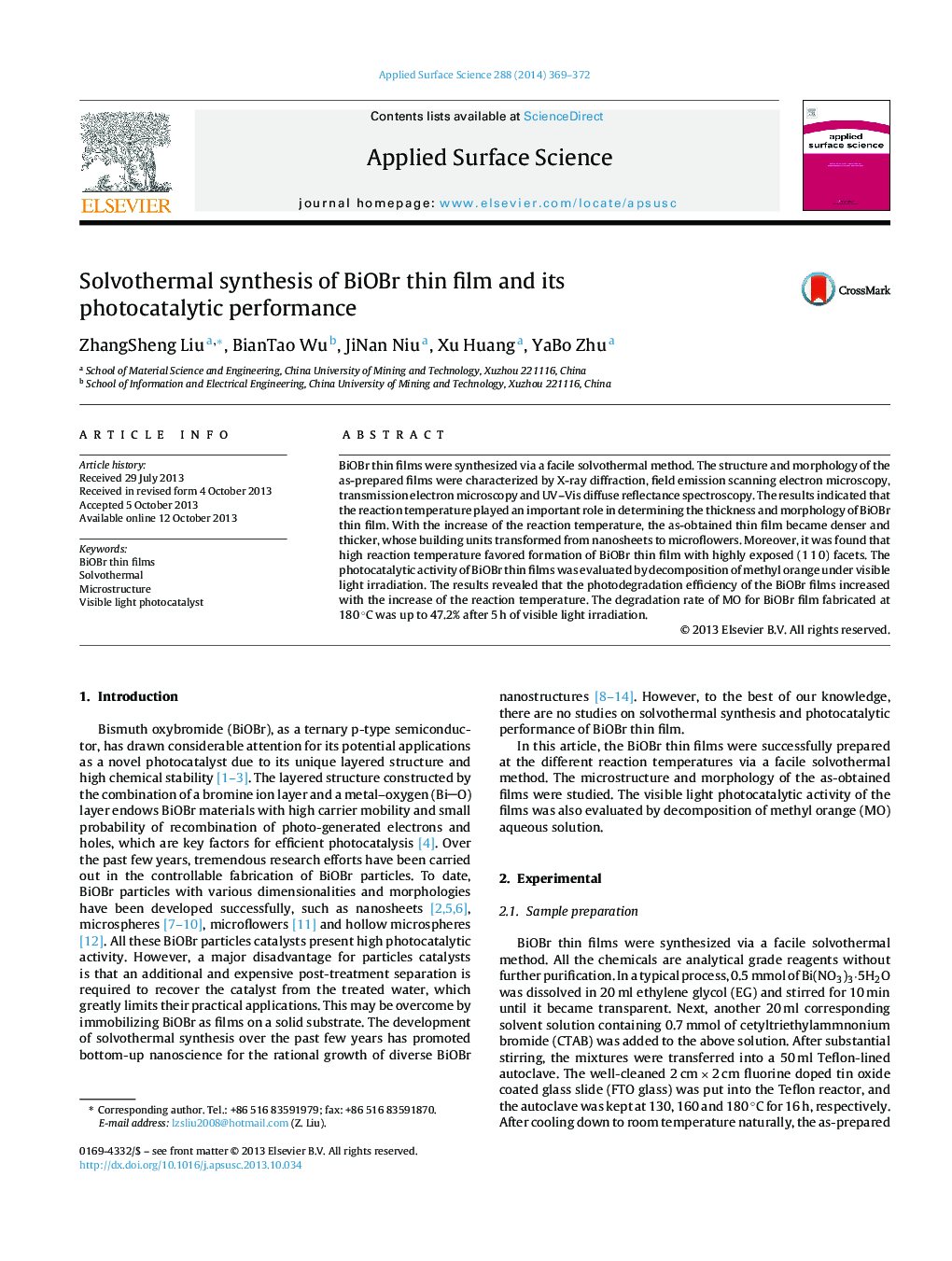| Article ID | Journal | Published Year | Pages | File Type |
|---|---|---|---|---|
| 5351853 | Applied Surface Science | 2014 | 4 Pages |
Abstract
BiOBr thin films were synthesized via a facile solvothermal method. The structure and morphology of the as-prepared films were characterized by X-ray diffraction, field emission scanning electron microscopy, transmission electron microscopy and UV-Vis diffuse reflectance spectroscopy. The results indicated that the reaction temperature played an important role in determining the thickness and morphology of BiOBr thin film. With the increase of the reaction temperature, the as-obtained thin film became denser and thicker, whose building units transformed from nanosheets to microflowers. Moreover, it was found that high reaction temperature favored formation of BiOBr thin film with highly exposed (1 1 0) facets. The photocatalytic activity of BiOBr thin films was evaluated by decomposition of methyl orange under visible light irradiation. The results revealed that the photodegradation efficiency of the BiOBr films increased with the increase of the reaction temperature. The degradation rate of MO for BiOBr film fabricated at 180 °C was up to 47.2% after 5 h of visible light irradiation.
Related Topics
Physical Sciences and Engineering
Chemistry
Physical and Theoretical Chemistry
Authors
ZhangSheng Liu, BianTao Wu, JiNan Niu, Xu Huang, YaBo Zhu,
